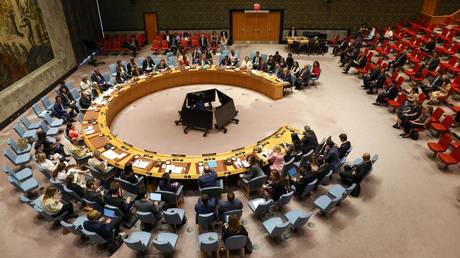What Are Key Leadership Development Needs for Today’s Leaders?

In today’s fast-paced work environment, effective leadership hinges on emotional intelligence, adaptability, and strong communication skills. You need to build robust relationships to cultivate team cohesion and improve productivity. Embracing lifelong learning is essential for staying relevant. Furthermore, recognizing employee contributions can drive motivation and retention. As you consider these elements, think about how they align with your strategic goals and the challenges you face in your leadership expedition. What’s next on your development path?
Key Takeaways

- Leaders need high emotional intelligence to enhance communication, conflict resolution, and team dynamics.
- Building trust-based relationships is essential for fostering teamwork and increasing productivity.
- Agility and adaptability are crucial for navigating rapid changes in the business environment.
- Encouraging innovation through diverse perspectives and recognizing contributions boosts team engagement and creativity.
- Developing strategic thinking skills helps leaders anticipate market changes and align resources effectively for long-term success.
The Importance of Emotional Intelligence in Leadership

Emotional intelligence (EI) is crucial for effective leadership as it directly impacts how you perceive and manage both your emotions and those of your team.
Developing EI improves key leadership competencies like communication, conflict resolution, and decision-making. By comprehending the components of leadership that involve emotional awareness, you can promote better interpersonal relationships and collaboration within your team.
Leaders with high EI can navigate challenges more effectively, demonstrating resilience and adaptability during times of change. This capability not just improves team dynamics but also leads to higher employee engagement and retention rates.
To meet leadership development needs, focus on cultivating your emotional intelligence, ensuring you create a supportive and motivating workplace culture that drives productivity.
Building Strong Relationships for Team Cohesion

To build strong relationships for team cohesion, you need to focus on trust-based connections and effective communication strategies.
Start by encouraging open dialogue and practicing active listening, as these skills align your team’s goals and promote collaboration.
Trust-Based Connections
Trust lies at the core of effective teamwork, serving as the foundation for strong relationships that drive team cohesion.
As a leader, you must prioritize trust-based connections to improve productivity and engagement.
Focus on these key components of leadership skills:
- Build genuine relationships to cultivate a collaborative environment, leading to a 21% increase in productivity.
- Invest in human connections, which can reduce absenteeism by 37% and improve overall quality.
- Leverage diverse perspectives within the team, promoting resilience and effective navigation through challenges.
Effective Communication Strategies
Building strong relationships within your team requires effective communication strategies that promote cohesion and alignment. Clear communication is fundamental; it cultivates trust and boosts productivity by 21% when relationships are prioritized.
Practice active listening to improve comprehension, which builds trust and encourages open dialogue, leading to 41% fewer quality defects. Adapt your communication style to fit diverse team dynamics, ensuring everyone feels valued and heard.
Regular feedback and transparency are crucial; recognition of contributions can increase employee morale by up to 60%. Finally, be mindful of non-verbal communication, as body language greatly impacts how your message is received.
Collaborative Problem Solving
Collaborative problem-solving is essential for nurturing strong relationships within your team, as it encourages open dialogue and collective engagement in addressing challenges. By promoting collaboration, you can create an environment that improves productivity and morale.
Here are key benefits to reflect upon:
- Diverse Perspectives: Engaging various viewpoints helps your team find the best solutions to complex issues, improving decision-making.
- Conflict Resolution: Strong relationships enable constructive conflict management, reducing the time spent on disputes and increasing overall efficiency.
- Employee Engagement: Building connections leads to higher engagement, resulting in fewer quality defects and lower absenteeism.
Emphasizing collaborative problem-solving not only strengthens internal dynamics but additionally equips your team to tackle challenges effectively, improving overall resilience during difficult times.
Adapting to Change: The Need for Agility

As the business environment evolves swiftly, agility has become an important leadership skill that can greatly influence an organization’s success. You need to adapt your strategies and approaches in response to both internal and external changes, ensuring your organization remains competitive.
Embracing a lifelong learning mentality is fundamental; it helps you keep pace with industry shifts and nurtures innovative problem-solving. By demonstrating accountability and responsibility, you improve your adaptability, enabling you to navigate challenges more effectively.
Flexibility in your leadership style allows you to address diverse team needs, contributing to a resilient culture. Finally, prioritize continuous learning and openness to feedback, as they’re key for adjusting your approaches and strategies in response to changing conditions.
Fostering Innovation and Creativity in Teams

To nurture innovation and creativity within your teams, it’s essential to create an environment that encourages diverse ideas and perspectives.
By prioritizing innovation, you can greatly improve employee engagement and drive growth. Here are some effective strategies to implement:
- Encourage diverse perspectives: Inclusive teams are 1.7 times more likely to innovate, so actively seek input from all members.
- Conduct regular brainstorming sessions: Structured opportunities for collaboration can lead to a 25% increase in creative output, helping your team think outside the box.
- Recognize and reward innovative contributions: Acknowledgment boosts motivation and can result in a 60% increase in employee engagement in creative tasks.
Implementing these practices will help your organization gain a competitive edge through improved creativity and innovation.
Strategies for Employee Motivation and Engagement

Creating an innovative culture within your organization sets the stage for effective employee motivation and engagement. To maintain high engagement levels, focus on continuous motivation. Recognize your employees’ contributions, as this can increase engagement by up to 60%. Appreciation is critical, with 63% of employees feeling undervalued. Boosting morale is crucial; 32% of employees prefer this as a motivational technique. Engaged employees lead to fewer quality defects and absenteeism, demonstrating the tangible benefits of your efforts.
| Strategy | Impact |
|---|---|
| Continuous Motivation | Higher engagement and innovation |
| Recognition of Contributions | Increased morale by 60% |
| Supportive Environment | Preferred by 32% of employees |
| Engaged Workforce | 41% fewer defects, 37% less absenteeism |
Enhancing Decision-Making Skills for Effective Leadership

Effective decision-making skills are essential for leaders who want to propel their organizations toward success. To improve these skills, you should focus on several key areas:
- Balance conviction and adaptability: Stand firm in your decisions, but be ready to adjust when circumstances change.
- Emphasize timeliness: Make decisions swiftly to maintain organizational agility, responding quickly to market shifts or internal changes.
- Foster collaboration: Involve your team in the decision-making process, as diverse perspectives can lead to better-informed choices.
Additionally, incorporate data analysis into your decisions. This helps you weigh options thoughtfully, using both intuition and rational analysis.
Conflict Management: Maintaining Workplace Harmony

Conflict often arises in any workplace, and how you manage it can greatly affect team dynamics and productivity. Managers spend at least 24% of their time handling conflicts, which shows its significant impact on performance.
To maintain workplace harmony, it’s essential to resolve or mitigate conflicts swiftly. Properly managed conflicts can lead to constructive outcomes, strengthening team dynamics. Developing your conflict management skills will improve interpersonal relationships within your team.
Encourage open communication and active listening during disputes to uncover underlying concerns. This approach not only aids resolution but also promotes a more harmonious work environment.
The Role of Communication in Leadership Success

Even though many factors contribute to leadership success, communication stands out as a cornerstone. Effective leaders know that clear communication aligns goals and expectations, nurturing trust and cohesion within teams.
To improve your leadership through communication, consider these key aspects:
- Active listening: This builds comprehension and relationships, creating a supportive and collaborative work environment.
- Transparency: Open communication nurtures psychological safety, leading to higher employee engagement and productivity.
- Adaptability: Tailoring your communication style to different audiences promotes inclusiveness, boosting creativity and innovation.
Developing Strategic Thinking for Future Challenges

To navigate future challenges effectively, you need to develop your strategic thinking skills.
This involves anticipating market changes and aligning your resources with long-term goals, ensuring your organization stays competitive.
Anticipating Market Changes
In today’s fast-paced business environment, anticipating market changes is crucial for leaders who want to stay ahead of the competition.
To do this effectively, you should focus on enhancing your strategic thinking skills. Consider these key areas:
- Stay informed about industry trends and shifts, as this knowledge helps you adapt your strategies.
- Use data-driven decision-making to identify opportunities and risks, ensuring long-term success for your organization.
- Encourage collaboration across teams, leveraging diverse perspectives to create innovative solutions for complex challenges.
Aligning Resources Strategically
Effective strategic alignment of resources is fundamental for leaders aiming to navigate future challenges successfully. By developing strategic thinking skills, you can anticipate market changes and adjust your resources accordingly. This proactive approach helps maintain a competitive advantage in a fast-paced environment.
Data-driven decision-making plays an imperative role in this process, enabling you to assess risks and identify opportunities that align with your organizational objectives. Moreover, nurturing collaboration across teams encourages innovative solutions to complex problems, promoting a shared vision among leadership.
Staying informed about industry trends is crucial, as it improves your strategic foresight, supporting long-term growth and sustainability. By efficiently allocating resources, you can effectively respond to evolving circumstances and drive your organization toward success.
Conclusion

In summary, today’s leaders must focus on developing emotional intelligence, adaptability, and effective communication skills. Building strong relationships and promoting innovation are essential for team success. Furthermore, implementing strategies for employee motivation and enhancing decision-making abilities can lead to better outcomes. By prioritizing these leadership development needs, you’ll be equipped to navigate challenges and align your team’s efforts with organizational goals. Continuous growth in these areas guarantees you remain effective and relevant in a swiftly changing workplace.
Image Via Envato
This article, "What Are Key Leadership Development Needs for Today’s Leaders?" was first published on Small Business Trends
What's Your Reaction?
 Like
0
Like
0
 Dislike
0
Dislike
0
 Love
0
Love
0
 Funny
0
Funny
0
 Angry
0
Angry
0
 Sad
0
Sad
0
 Wow
0
Wow
0
.jpg?width=1200&auto=webp&trim=0,0,0,0#)




























































































